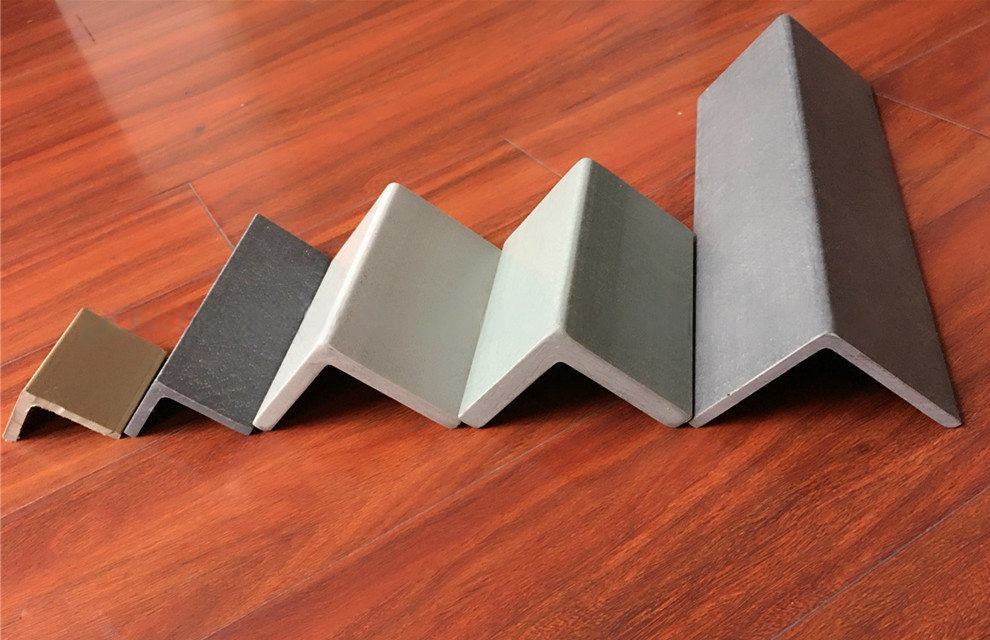Introduction
FRP equal angle, or Fiber Reinforced Plastic equal angle, is gaining significant attention in the construction and manufacturing industries due to its unique properties and benefits. Unlike traditional materials like steel or aluminum, FRP equal angles offer enhanced durability, resistance to corrosion, and a lightweight structure, making them ideal for various applications. In this article, we will explore what FRP equal angles are, their advantages, and how they are being utilized in modern construction projects to deliver efficiency and longevity.

frp equal angle
What is FRP Equal Angle?
FRP equal angle is a composite material made of high-strength fibers, such as glass or carbon, embedded in a plastic matrix. This composition gives FRP equal angles their superior strength-to-weight ratio, making them an excellent alternative to traditional materials like steel and aluminum. Unlike conventional metals, FRP equal angles do not rust, corrode, or warp, even in harsh environmental conditions, which extends their lifespan and reduces maintenance costs.
Key Benefits of Using FRP Equal Angle
- Lightweight Yet Strong
One of the most notable benefits of FRP equal angle is its lightweight nature. Despite being much lighter than steel or aluminum, it maintains excellent strength and stiffness, allowing for easy handling and installation without compromising structural integrity. - Corrosion-Resistant
FRP equal angles are inherently resistant to corrosion, making them perfect for use in environments where exposure to moisture, chemicals, or saltwater is common. This property makes them ideal for applications in marine, industrial, and chemical settings, where other materials may deteriorate quickly. - Easy to Install and Maintain
The lightweight nature of FRP equal angles simplifies the installation process, reducing labor costs and time on site. Furthermore, due to their resistance to environmental damage, these materials require minimal maintenance over their lifespan, leading to significant cost savings. - Cost-Effective in the Long Run
While the initial cost of FRP equal angles may be slightly higher than traditional materials, their durability, low maintenance requirements, and longer lifespan make them a cost-effective choice in the long term. Reduced need for repairs or replacements translates to lower overall expenses.
Applications of FRP Equal Angle in Construction
- Structural Support in Buildings and Bridges
FRP equal angles are commonly used in structural applications where lightweight yet robust materials are necessary. They are often employed in constructing frameworks, supporting beams, and reinforcing building facades and bridges. - Use in Marine and Corrosive Environments
Thanks to their corrosion-resistant properties, FRP equal angles are ideal for use in marine environments, such as docks, piers, and offshore platforms. They are also highly suitable for chemical plants, wastewater treatment facilities, and other areas where exposure to corrosive substances is frequent. - Integration in Power Plants and Chemical Industries
The chemical and power generation industries benefit from the use of FRP equal angles in the construction of platforms, walkways, and ladders. Their resistance to chemicals, heat, and electricity makes them a safe and reliable choice.
Why Choose FRP Equal Angle Over Traditional Materials?
- Comparative Analysis of FRP with Steel and Aluminum: FRP equal angles outperform steel and aluminum in environments exposed to moisture, chemicals, or saltwater. While steel and aluminum may corrode or require regular painting and maintenance, FRP remains unaffected, offering longer service life.
- Environmental Benefits: FRP materials are more sustainable as they require less energy to produce and are often made from recyclable components. Additionally, their durability reduces the frequency of replacements, minimizing waste.
- Long-Term Cost Savings: Despite a potentially higher initial investment, the long-term benefits of FRP equal angles, including reduced maintenance, fewer replacements, and lower labor costs, lead to substantial savings over time.
Conclusion
FRP equal angles are a superior alternative to traditional construction materials, offering a range of benefits, including durability, resistance to corrosion, and cost-effectiveness. As construction demands evolve towards sustainable and long-lasting solutions, FRP equal angles stand out as a smart choice for both small and large-scale projects. Consider integrating FRP equal angles into your next construction project to enjoy these advantages and ensure a future-proof build.




























